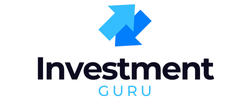When your car lease ends, you usually have two main choices: return the vehicle or buy it out. If you choose to buy it, most people use a lease buyout loan to cover the cost. At the same time, some drivers consider refinancing their existing auto loan to lower their rate or monthly payment. While both options involve borrowing, the costs and benefits can be very different.
A lease buyout loan is specifically designed to help you purchase the car you’ve been leasing. Since you already know the buyout price set in your lease agreement, the loan amount is fixed. These loans can be convenient if you want to keep driving the same car, but the interest rates may be slightly higher than traditional auto loans, depending on your credit score and the lender.
Refinancing, on the other hand, means replacing an existing auto loan with a new one, usually at a lower rate. This option works best if you already own the car and have built positive equity, or if interest rates have dropped since you first financed it. Refinancing can save you money over the life of the loan, but it’s not the same as buying out a lease—you’ll only refinance an existing loan balance, not the buyout price.
The cheaper choice depends on your situation. A lease buyout loan makes sense if you love your current car and the buyout price is fair compared to market value. Refinancing is usually cheaper when your loan balance is high, rates have fallen, or your credit has improved since you first borrowed.
In this article, we’ll break down lease buyout loans vs refinancing step by step, looking at rates, fees, and scenarios where each one saves you the most money. By the end, you’ll know which option fits your budget and long-term financial goals.
Table of Contents
Understanding Lease Buyout Loans

A lease buyout happens when you decide to purchase your leased car instead of returning it at the end of the contract. To fund the buyout, drivers often take a lease buyout loan. This type of loan lets you pay the leasing company the “residual value” (the cost estimated when you first leased the car) plus any fees.
How Lease Buyout Works
- You contact your leasing company for the buyout amount (residual value + fees).
- You apply with a bank, credit union, or online lender for a lease buyout loan.
- The lender pays off the leasing company directly.
- You repay the new loan in monthly installments.
Lease buyouts are attractive if your car is in great condition, has lower miles, or the market resale value is higher than the residual value. According to Consumer Finance Protection Bureau, borrowers should closely review financing terms and interest rates to avoid paying more than necessary.
What Is Refinancing a Car Loan?
Auto loan refinancing is different. If you already own a car financed through a loan, refinancing means replacing your current loan with a new one, usually at a lower interest rate or for a longer term. This move can lower your monthly payments or save money over the life of the loan. According to Investopedia’s refinancing guide, the best candidates are those with improved credit scores since first taking out the loan.
Benefits of Refinancing
- Lower interest rates with a higher credit score.
- Reduced monthly payments to free up cash flow.
- The flexibility to shorten or extend your loan term.

Lease Buyout Loan Rates vs Refinance: Key Comparison
When comparing lease buyout loan rates vs refinance, the main decision factors include interest rates, upfront costs, benefits, and flexibility. Let’s examine them side by side.
| Factor | Lease Buyout Loan | Refinancing Auto Loan |
|---|---|---|
| Purpose | Helps you purchase your leased vehicle outright. | Replaces your current car loan with better terms. |
| Rates | Often slightly higher than refinance loans since it’s like a new loan. | Rates can be lower if your credit has improved. |
| Upfront Costs | Buyout fee, DMV transfer fees, loan origination fees. | Possible application or processing fees, but usually lower. |
| Monthly Payments | Depends on residual value; likely higher than refinance. | Often lower monthly payments if refinancing reduces APR. |
| Flexibility | No future leasing with that car; you now own it. | Can extend, shorten, or restructure loan payments. |
Which Is Cheaper: Lease Buyout or Refinance?
The cheapest option depends on your goals. Lease buyout loans may be more expensive if the residual value is higher than the car’s current market worth. Refinancing, however, can deliver savings if interest rates and your credit rating have improved since your first loan.
In general, refinancing is a cheaper option for lowering monthly costs, while lease buyout is more about securing ownership if you value the car’s condition or prefer to avoid shopping for another model.
Step-by-Step: How to Apply for a Lease Buyout Loan
- Check your lease terms for the correct buyout amount.
- Shop for lenders who specialize in lease buyout loans. Credit unions often offer competitive rates.
- Submit an application with proof of income, employment, and credit profile.
- Once approved, confirm payoff details with your leasing company.
- Close the loan and register the car under your ownership.
Some lenders provide mobile apps where you can sign digital documents, upload proof of insurance, and schedule automatic payments. Look for extra fees and calculate total interest before committing.
Step-by-Step: How to Refinance a Car Loan
- Review your existing loan terms (APR, balance, remaining period).
- Check your updated credit score to estimate potential offers.
- Compare lenders online (banks, credit unions, fintech platforms).
- Apply for refinancing with documentation (income, current loan details, ID).
- Choose the best offer and complete the payoff process.
Many lenders have apps that enable in-app loan management, autopay scheduling, and even loan calculators. Some platforms may charge origination fees or in-app premiums for additional tools like credit monitoring.

Cost Factors That Influence Lease Buyout Loan Rates vs Refinance
- Credit Score: Improved credit leads to lower refinancing rates, while lease buyout loans often use stricter criteria.
- Residual Value: If your car’s buyout price is higher than market value, refinancing may save more.
- Current Interest Environment: According to the Federal Reserve, auto loan rates shift with monetary policy changes. Lower market rates favor refinancing.
- Loan Term: Longer loans reduce monthly payments but increase lifetime interest.
- Vehicle Age: Older vehicles may have fewer financing options.
Pros and Cons of Lease Buyout Loans
Pros
- You keep a car you know and trust.
- No wear-and-tear charges or excess mileage fees from the leasing company.
- Potential to save money if the residual value is below market value.
Cons
- Higher loan rates compared to refinance.
- Large upfront buyout costs.
- Owning a car that may depreciate faster.
Pros and Cons of Refinancing
Pros
- Lower monthly payments.
- Potentially lower total loan cost with better rates.
- Increases cash flow flexibility.
Cons
- Extending loan terms can cost more long-term.
- Requires improved credit or better interest environments.
- Possible lender fees reduce total savings.
FAQs About Lease Buyout Loan Rates vs Refinance
1. Is it better to buy out a lease or refinance?
It depends. If you love your car and the buyout price is favorable, lease buyout works. If payments are your priority, refinancing often costs less.
2. Are lease buyout loan rates higher than refinancing rates?
Typically, yes. Buyout rates sometimes run higher since it’s considered new financing.
3. Can I refinance my lease?
No. Refinancing only applies to existing loans. With a lease, you must buy it out first, then you could refinance that loan afterward.
4. Will refinancing hurt my credit?
Your score may dip temporarily from hard inquiries, but consistent payments could help credit scores long-term.
5. What credit score do I need for lease buyout or refinancing?
A score above 660 is often required for favorable rates, but some lenders accommodate fair credit borrowers.
6. Is it cheaper to lease a new car instead of buying my lease?
Leasing again can reduce monthly payments but adds ongoing costs without equity. Buying your lease builds ownership value.
7. Do all lenders offer lease buyout loans?
No. Many traditional lenders focus on refinancing. Credit unions generally provide better buyout terms.
8. Can I roll taxes and fees into a lease buyout loan?
Yes, but it increases the loan balance and interest charges. Paying upfront is typically cheaper.
9. How long does refinancing approval take?
Pre-approval may take minutes, with full processing between 2–7 days depending on the lender.
10. Can I buy out my lease and refinance immediately afterward?
Yes. You can take a buyout loan, then refinance soon after if you qualify for better rates to lower payments.
Conclusion
When weighing lease buyout loan rates vs refinance, the cheaper option aligns with your individual priorities. Leasing buyouts are ideal if you want to keep your car and avoid returning fees—though rates may be higher. Refinancing best serves those already owning a car who want to reduce costs.
Carefully analyzing your credit profile, market rates, and residual values is essential. Compare multiple lenders, run payoff calculations, and choose the option that saves the most both monthly and long-term. Start today by collecting your lease details or current loan statement, and request quotes from at least three lenders to identify your strongest savings opportunity.


